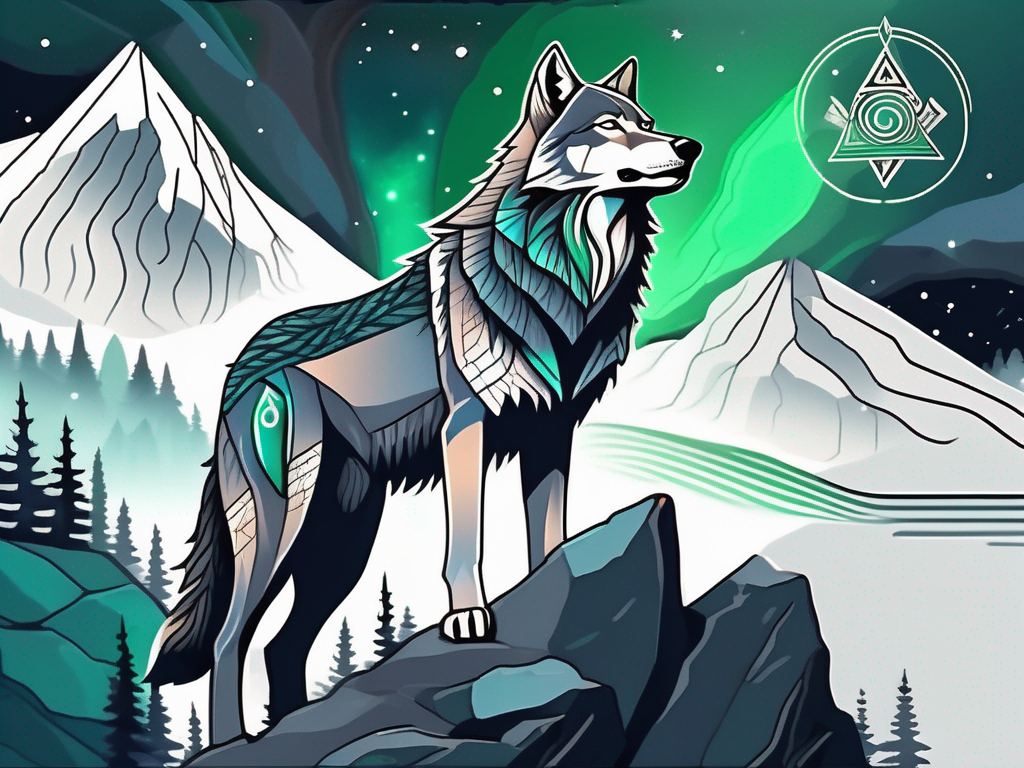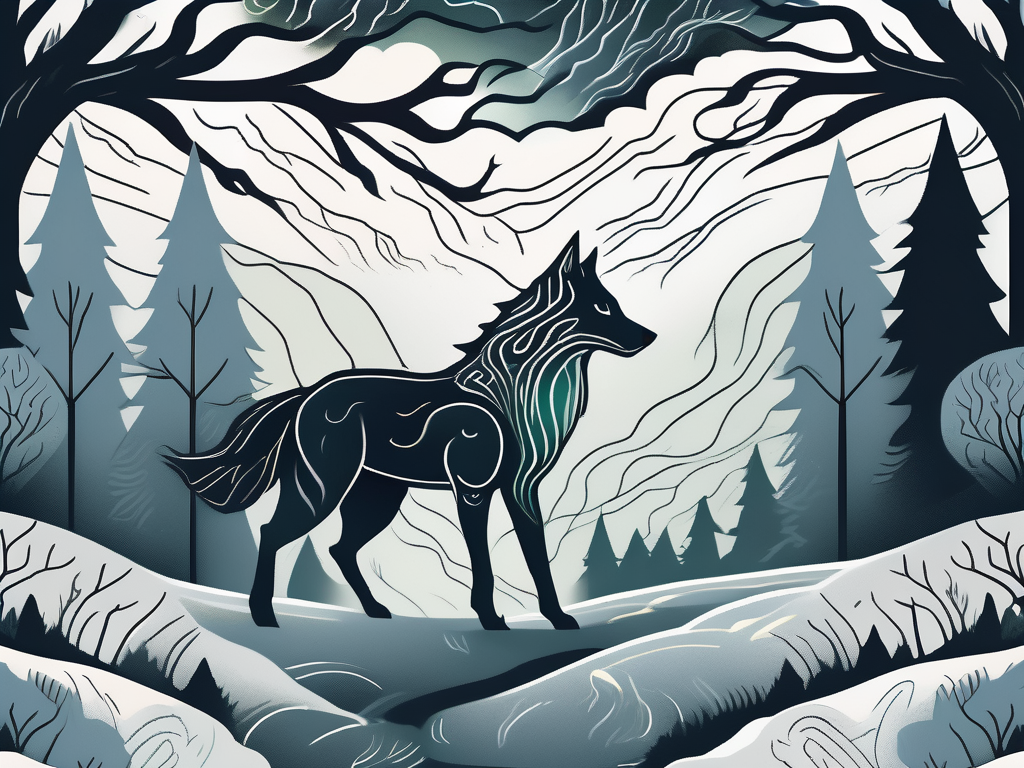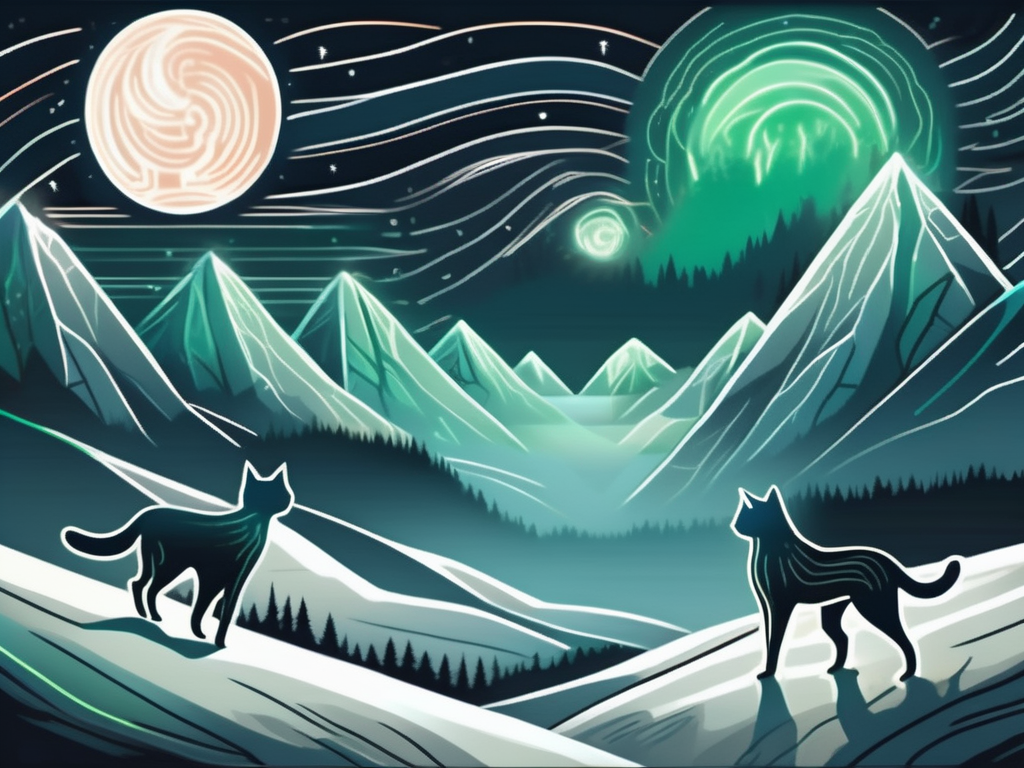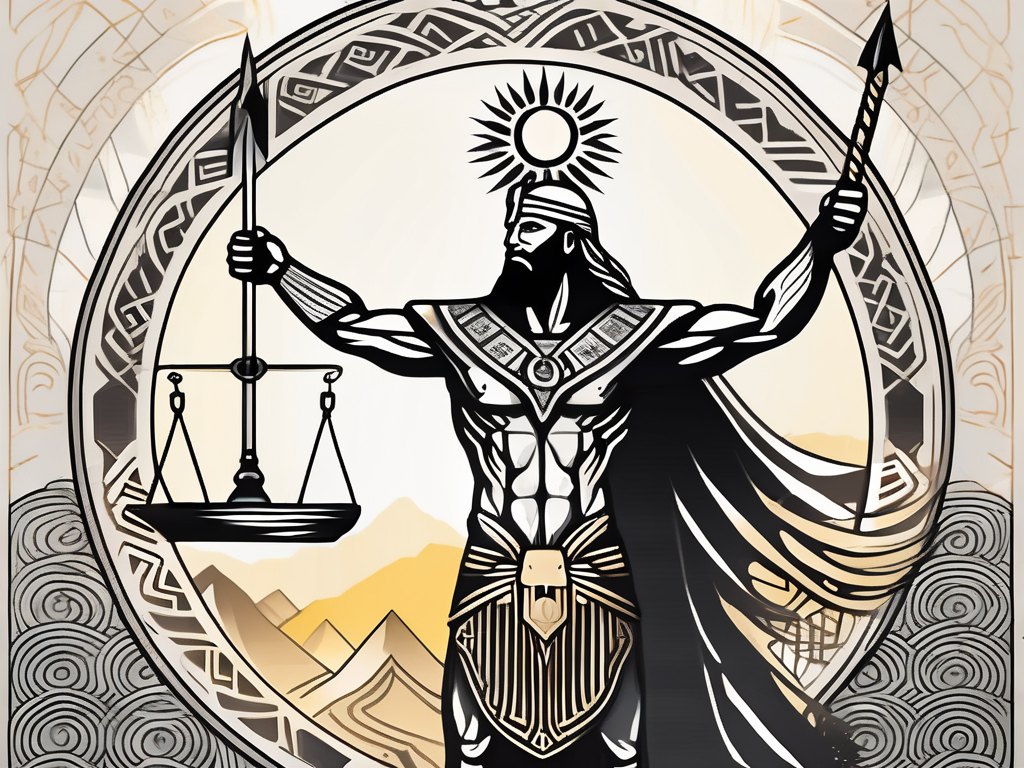Norse mythology is a rich and intricate tapestry of gods, goddesses, and mythical creatures. Among these creatures, one animal stands out for its significance and symbolism: the wolf. The wolf holds a special place in Norse mythology, appearing in various stories, rituals, and art forms. In this article, we will delve into the captivating role of wolves in Norse mythology and explore their origins, symbolism, and influence on modern culture.
Understanding Norse Mythology
Before we dive into the fascinating world of Norse wolves, let’s take a moment to understand the broader context of Norse mythology. Originating from the ancient Norse people who inhabited Scandinavia during the Viking Age, Norse mythology encompasses a vast collection of stories, legends, and beliefs. It revolves around gods such as Odin, Thor, and Loki, along with powerful beings like giants, elves, and, of course, wolves!
Scandinavia, with its harsh and unforgiving landscapes, played a significant role in shaping the Norse mythology. The ancient Norse people, who were deeply connected to nature, found solace and inspiration in the wild and untamed wilderness that surrounded them. It was in this rugged environment that the tales of gods and mythical creatures were born.
Odin, the Allfather and ruler of Asgard, was one of the most prominent figures in Norse mythology. Known for his wisdom and knowledge, Odin was often accompanied by two wolves, Geri and Freki. These fierce and loyal companions symbolized the primal forces of nature and served as a reminder of the untamed power that resided within the gods.
But not all wolves in Norse mythology were benevolent. Fenrir, a monstrous wolf and son of Loki, was feared by both gods and humans alike. With his insatiable hunger and uncontrollable rage, Fenrir was destined to bring about the destruction of the gods during Ragnarok, the apocalyptic battle that marked the end of the world.
Wolves also played a significant role in the lives of humans in Norse mythology. They were often seen as protectors and guardians, guiding lost souls to the afterlife. In some stories, warriors who died bravely in battle were said to be chosen by the wolves to join the ranks of the honored dead in Valhalla, Odin’s great hall.
Throughout Norse mythology, wolves were not only creatures of power and destruction but also symbols of loyalty and guidance. They embodied the untamed forces of nature, reminding both gods and humans of the delicate balance between order and chaos.
So, as we delve deeper into the world of Norse wolves, let us explore the intricate tales and legends that surround these majestic creatures. From their divine companionship to their role in the impending apocalypse, the wolves of Norse mythology continue to captivate our imagination and remind us of the rich and complex tapestry of ancient beliefs.
The Significance of Wolves in Norse Mythology
Wolves as Divine Companions
In Norse mythology, wolves hold a prominent place as divine companions to gods and goddesses, symbolizing various qualities and playing significant roles in the Norse cosmology.
One notable example is the pair of wolves named Geri and Freki, who are said to accompany the Allfather Odin. These wolves embody loyalty and ferocity, symbolizing the qualities valued by warriors in Norse society. They are depicted as Odin’s constant companions, always by his side, ready to defend him and aid him in battle.
Furthermore, Norse mythology identifies two wolves, Skoll and Hati, who relentlessly chase the sun and moon, seeking to devour them during Ragnarok, the cataclysmic battle that marks the end and rebirth of the world. These wolves embody the constant struggle between order and chaos, highlighting their significance in Norse cosmology. The eternal pursuit of Skoll and Hati represents the perpetual conflict between light and darkness, day and night, and the delicate balance that exists in the cosmos.
Wolves as Symbols of Destruction
Despite their association with gods, wolves in Norse mythology are not always benevolent beings. The monstrous wolf Fenrir, for example, plays a pivotal role in the prophecy of Ragnarok. Son of the trickster god Loki, Fenrir grows uncontrollably and becomes a fearsome beast capable of devouring the cosmos.
Fenrir’s immense size and strength make him a formidable adversary, posing a great threat to the gods and the stability of the world. He eventually breaks free from his bonds and takes part in the apocalyptic battle, where he is destined to kill Odin, the ruler of the gods. This act of destruction symbolizes the inevitable cycle of life and death, where even the most powerful gods can fall victim to the forces of chaos.
The destructive power of Fenrir represents the chaotic forces that threaten to bring about the end of the present age. It serves as a reminder that no matter how mighty the gods may be, they are not immune to the natural order of destruction and rebirth. In this sense, wolves in Norse mythology embody the ever-present tension between creation and destruction, order and chaos.
Notable Wolves in Norse Mythology
The rich tapestry of Norse mythology is filled with captivating tales of gods, giants, and other mythical creatures. Among these fascinating beings, the wolves hold a prominent place, their presence symbolizing the eternal struggle between order and chaos, light and darkness.
Fenrir: The Wolf Destined to Kill Odin
One of the most intriguing wolves in Norse mythology is Fenrir, the monstrous offspring of Loki and the giantess Angrboda. From the moment of his birth, Fenrir’s fate was intertwined with the prophecy of Ragnarok, the cataclysmic event that would bring about the end of the world.
Recognizing the destructive potential of Fenrir, the gods decided to bind him in an attempt to prevent the fulfillment of the prophecy. However, Fenrir’s immense strength and cunning made him a formidable adversary, and no ordinary bindings could contain him.
When the time of Ragnarok finally arrived, the chains that held Fenrir were shattered, and he broke free, unleashing chaos upon the world. In a climactic clash, Fenrir engaged in a fierce battle with Odin, the ruler of the gods. This epic confrontation between the divine and the monstrous signified the inevitable struggle between order and chaos, light and darkness.
Skoll and Hati: The Wolves Chasing the Sun and Moon
Adding an intriguing element to Norse mythology, Skoll and Hati are two wolves that relentlessly pursue the sun and moon. Skoll, whose name means “One Who Mocks,” chases the sun, while Hati, meaning “He Who Hates,” pursues the moon.
As Skoll and Hati inch closer to their celestial targets, the earth trembles, symbolizing the impending chaos of Ragnarok. The never-ending chase of these wolves is destined to fail, but their existence reinforces the cyclical nature of the cosmos. It serves as a reminder that even in the face of inevitable destruction, the world will be reborn, and the struggle between light and darkness will continue.
These wolves, with their immense power and symbolic significance, are just a glimpse into the vast and captivating world of Norse mythology. They remind us of the eternal forces at play in the universe and the timeless tales that continue to captivate our imaginations.
The Role of Wolves in Norse Rituals and Art
Wolves in Norse Ritual Practices
Wolves held a significant place in Norse rituals and religious practices. The Norse people believed in connecting with supernatural beings through acts of worship and sacrifice. Wolves were revered for their connection to the wild and were often associated with the spirit world.
In certain rituals, participants would wear wolf skins or don wolf-like masks to embody the strength, ferocity, and primal nature of these creatures. Through these symbolic acts, the Norse people sought to tap into the power of the wolf and gain its divine protection.
Depictions of Wolves in Norse Art and Literature
Norse art and literature are replete with depictions of wolves, showcasing their prominent role in the mythology of the era. Intricately crafted jewelry, known as wolf heads, often adorned the warriors as tokens of strength and protection.
In the poetic Edda, a collection of Old Norse poems, numerous references to wolves can be found. These poems celebrate heroic deeds, recount mythical tales, and explore the vast cosmos inhabited by gods and mythical creatures.
The Modern Influence of Norse Wolves
Norse Wolves in Popular Culture
The influence of Norse wolves extends beyond ancient myths and legends. In modern popular culture, wolves from Norse mythology continue to captivate audiences worldwide. Films, books, and television series draw inspiration from these powerful creatures, incorporating their symbolism and lore into contemporary storytelling.
The ferocity, cunning, and loyalty associated with Norse wolves are often emulated in characters who embody similar traits. These characters resonate with audiences, tapping into the enduring fascination with mythological creatures and their timeless significance.
The Legacy of Norse Wolves in Modern Beliefs and Symbolism
Beyond their portrayal in popular culture, Norse wolves have left an indelible mark on various belief systems and symbolic representations. Individuals who resonate with the qualities embodied by these majestic creatures often adopt them as personal symbols, embracing the strength, power, and resilience associated with wolves.
Furthermore, modern interpretations of Norse mythology have given rise to renewed interest in the worship and spiritual practices of ancient Norse traditions. Those seeking a deeper connection with the past often turn to the symbolism of wolves as a means of reconnecting with the wisdom and power of their ancestors.
In Conclusion
From their divine companionship with gods to their destructive potential in apocalyptic battles, wolves occupy a fascinating role in Norse mythology. Their significance is not limited to ancient tales but continues to influence and inspire contemporary culture. Whether portrayed as noble protectors or fearsome adversaries, the wolves of Norse mythology endure as captivating creatures, reminding us of the eternal struggles between light and darkness, order and chaos.












